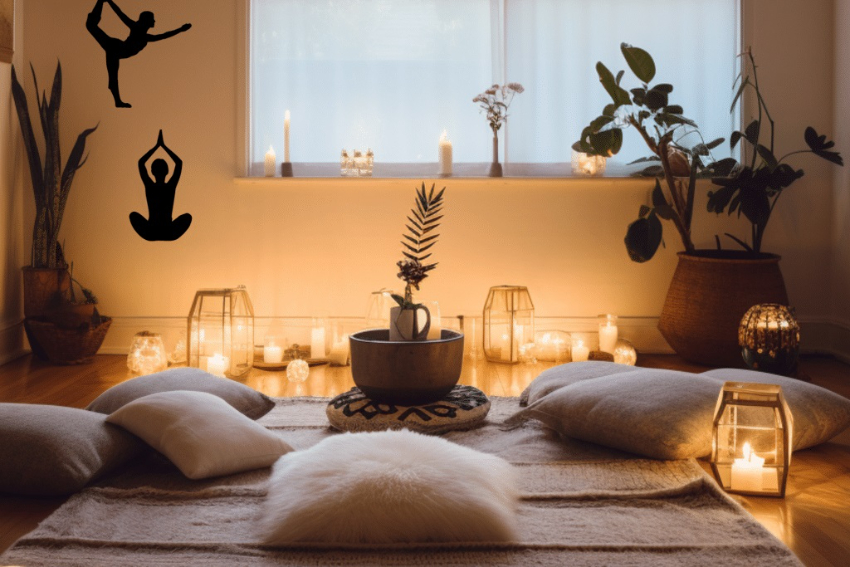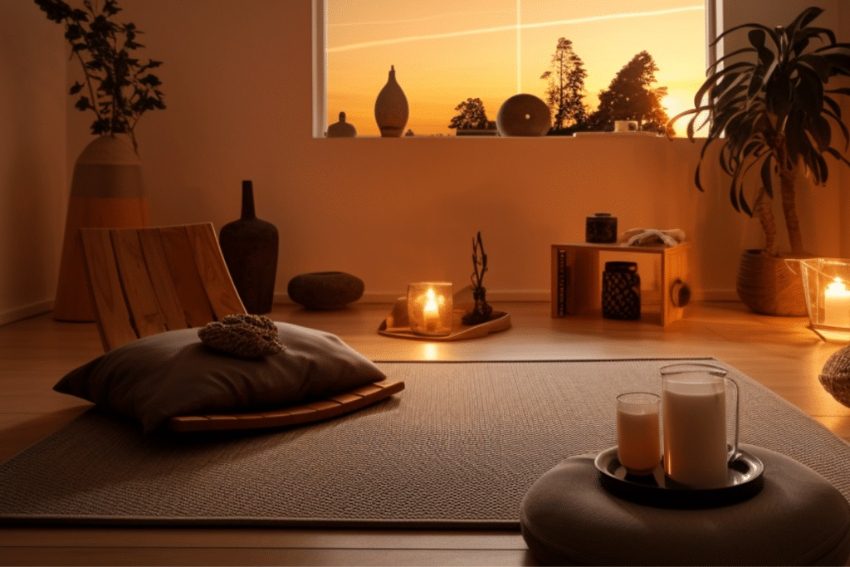
The door of Ch’an is entered by Wu. When we meditate on Wu we ask “What is Wu?” On entering Wu, we experience emptiness; we are not aware of existence, either ours or the world’s.
E-MAIL: admin@relaxmid.com
Carving out a dedicated relaxation space at home can be transformative amid life’s hustle and bustle. Personal sanctuary provides you the ability to slow down, back away, and relax, and provide you with the space to heal and care for your mental and physical well being. Whether dealing with daily stressors or seeking a quiet corner for mindfulness practices, designing a relaxation space at home is a valuable investment in self-care.
This article explores tips and creative ideas for creating a relaxation space that aligns with your needs, promoting a sense of calm and serenity.

Modern life is overstressing you and you hardly find time to relax. A home relaxation space can:
Select an area in your home with no distractions and which is private. That spot could be a leftover corner, a spare room or even a place by a sunny window.
Comfort is also important and will involve such things as cushioned chairs, bean bags or floor pillows. On an extra cozy side, add soft throws and blankets.
So a little soft, warm lighting creates a soothing atmosphere. Candles, dimmable lamps or string lights work well. Carry natural light to bring a pleasant freshness into your day.
Pick colors that bring you peace, from soft blues, greens or neutral color tones. These colours also can bring some calming to the mind.
You can bring a natural effect to your space and enhance relaxation and better air quality with plants, flowers, or even a small indoors fountain.
Mood is very sensitive to scent. Scented candles, incense sticks, or using essential oil diffusers together is the most common way to use them; novice users like to go with the lavender, chamomile, or sandalwood scents.
Add things you like that bring you peace and joy (books, photos, artwork, etc.). The personal elements make your space a unique thing.

If you are in love with reading, set up a little corner of yours, in it a chair, a small table, and a stack of your favorite books. Soft light and a blanket to make it even more comfortable.
If you’re a meditation fan, include a yoga mat, meditation cushion and even such calming décor through mandalas or salt lamps. Cleared of clutter, keep the area free to focus and be mindful.
Make your bathroom a spa-like retreat. We won’t come out until next midnight. I add fluffy towels, bath salts, candles, and soothing music as I prepare for an indulgent relaxation session.
If you like being outdoors opt for a nature inspired space filled with plenty of greenery, wood tones and earthy accents. Make sure the place is quite near a window where there is natural light and fresh air.
If you like to get creative, there’s a space for paint, crayon, or craft. Provide an easel, crayons and markers, calming music throughout, and uninterrupted quiet time for its current best uses.
Clutter can be stressful. Clean up the space on a regular basis, and do not use it as some kind of storage or other activity.
Have limits on where your electronic devices are allowed to be and make sure they don’t distract you.
Set aside dedicated time each day to enjoy your relaxation space. It can even be only 10–15 minutes of difference.
Even though your needs don’t necessarily change, that doesn’t mean you shouldn’t refresh your space with new elements or adjustments that will keep it feeling calming.
A relaxation space provides a safe environment for decompressing and managing stress, reducing the risk of anxiety and burnout.
A dedicated relaxation area can allow you to take breaks, these breaks in your mind will allow it to recharge and this will improve your concentration and productivity on a long term basis.
Designating space for self care takes the element of choice out of self care, which makes it easier to keep up.
Sleep, like any bodily function, is dependent on the functioning of a healthy body.
Relaxation of body and mind can result in better communication and emotional balance which will be good for your relations with people.
A relaxation space is only as adequate as the practices you bring into it. Consider the following activities to make the most of your space:
Creating a relaxation space at home is an investment in your mental and physical well-being. Instead of designing a space that looks great but doesn’t serve everyone’s needs, you can create a sanctuary that encourages peace, lowers stress, and works as a space for emotional balance.
Whether it’s a meditation corner, a reading nook, or a nature-inspired retreat, your relaxation space can become a cornerstone of your self-care routine, helping you navigate life’s challenges with greater calm and resilience.
Do your part to design your own haven today, your mind, and body will thank you.
